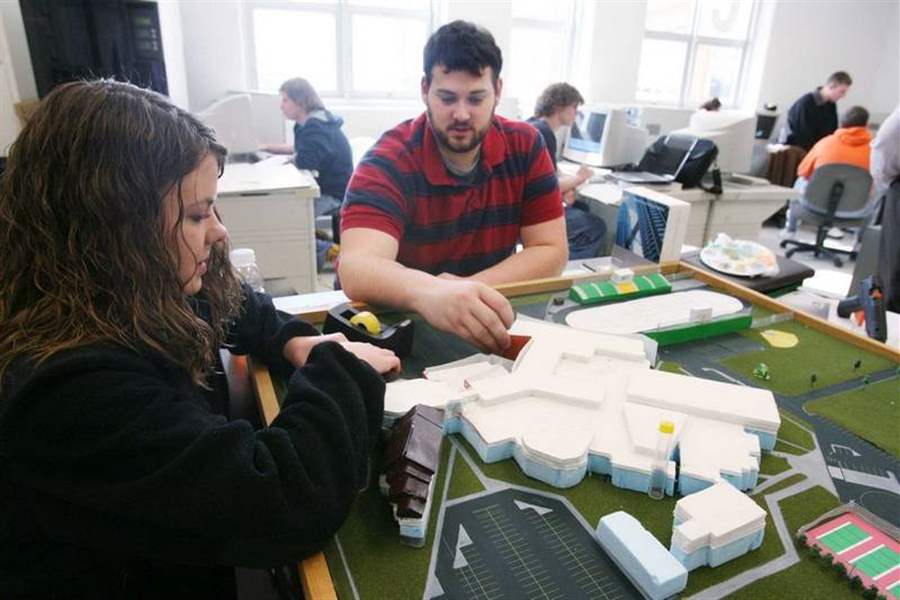
4 to compete with plans for school safety
2/27/2008
Above, Clay High School computer-aided drafting and design students Elizabeth Schenk, left, and Mychael Wagoner work on an architectual model of the school.

Above, Clay High School computer-aided drafting and design students Elizabeth Schenk, left, and Mychael Wagoner work on an architectual model of the school.
A Clay High School class project that law enforcement officials said could be used to possibly save lives during an emergency situation in Oregon City Schools will be entered into a competition next week.
Del Kuntz, who teaches computer-aided drafting and design, is sending four students to vie in the Northwest Ohio Tech Prep Regional Showcase Tuesday at Terra Community College in Fremont.
Seniors Mychael Wagoner, Elizabeth Schenk Bob Brillhart, and Andy Kissling are among 17 Clay students who in December completed computer-designed floor plans of their school district's buildings to submit to the Ohio Association of Chiefs of Police. The association is contracted through the state attorney general's office to collect data on the layouts of all Ohio schools as part of a state law governing school-safety plans.
The law requires school officials in Ohio to plan for emergency scenarios, such as shootings, and to submit blueprints of all schools in their districts to a database for emergency responders to use in a domestic terrorist situation.
Though only blueprints are required, Mr. Kuntz's class decided to go above and beyond the call of duty.
Beginning in September, the students walked through every "nook and cranny" of every school building in their district, including janitor's closets, crawl spaces, and roof-access locations.
Students mapped out ventilation systems as well as the placement of gas and water shut-off units.
"It was cool," said student Bob Cousino, 17, who plans to attend the University of Toledo in the fall. "We got to see everything, the tunnels under Clay, the floor plan, and we got to look around it. You just try to find every little spot so if there was an attack on Clay, there'd be nowhere to hide."

Andy Kissling uses a computer to design schematics for the school buildings.
The students used the information to create a detailed schematic for law enforcement officials, Mr. Kuntz said.
Eric Finger, 18, a student who received a scholarship to attend UT and participate in its engineering program this fall, said he's participated in design projects before, but this one was different.
"It's kind of unreal just to think something I helped draw could actually help save people's lives," he said.
Tim McLeod, Oregon school resource officer who is stationed at the high school, said in an emergency situation like a school shooting, the students' floor plans could give first responders a better idea of where injured people or shooting suspects are located.
"If there's an active shooter, they'd be able to look at the map and know exactly where that room is," he said.
He added that most school districts get their architectural blue prints from the firm that designed the school, but that information can be outdated and exclude the layout of new sections of schools.
Bob Cornwell, executive director of the Buckeye State Sheriff's Association that also uses the blueprints, said he's never heard of any school district going as far as Oregon to comply with the law.
The students, he said, have done, "an admirable job at trying to assist the first responders and local police agencies in doing their jobs."
The competition next week is run by a partnership of four tech-prep consortiums in northwest Ohio.
Ed Harper, who runs the Workforce Development Council consortium in Fremont, said it involves students from 25 counties who compete as individuals or in teams of two to six for a panel of judges from the fields of business, industry, labor, and education.
Winning team members will each receive a $500 scholarship to Bowling Green State University's Firelands campus, Terra Community College, or North Central State College in Mansfield, if they choose to attend there in the fall.